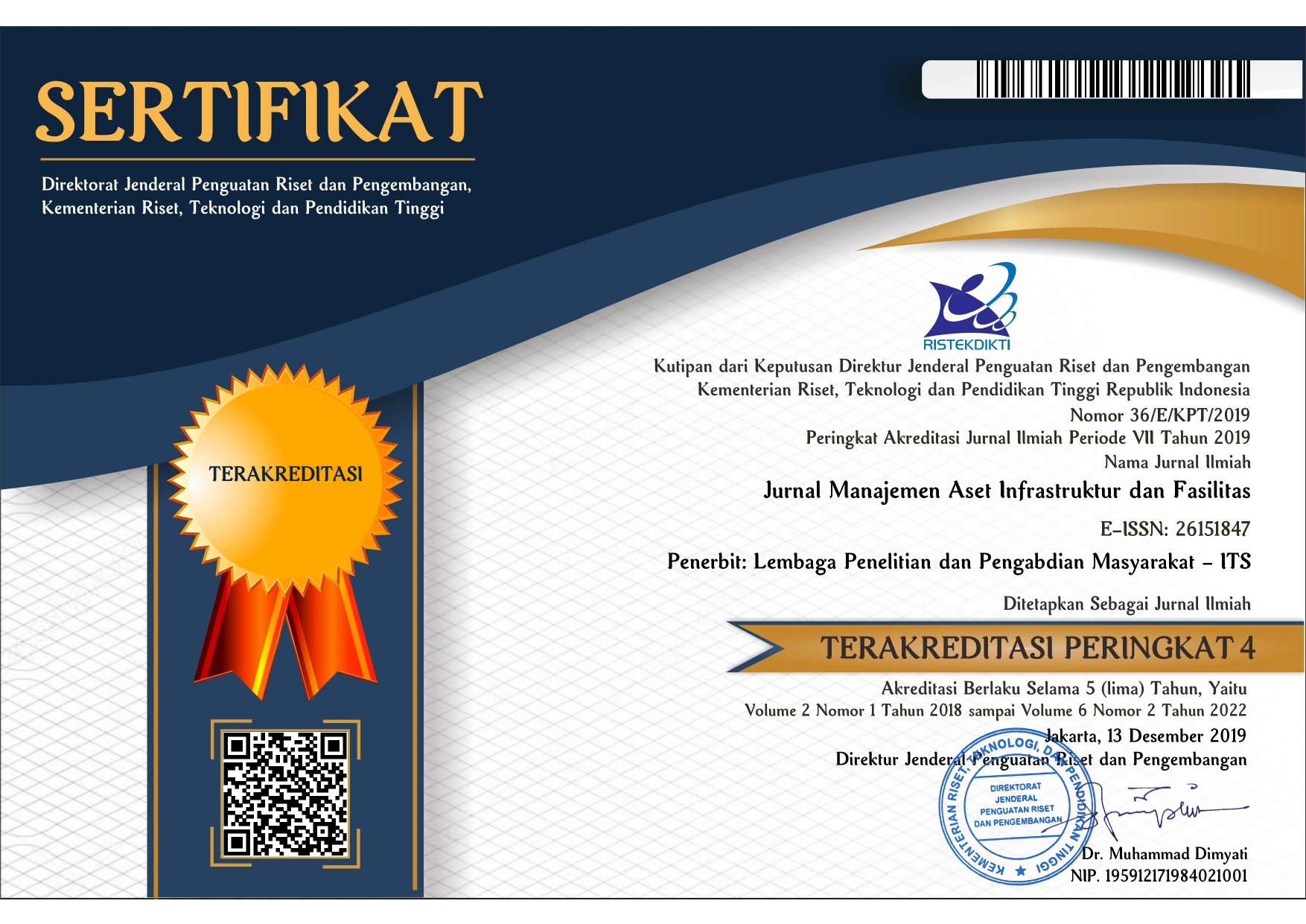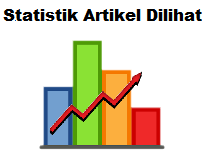Individual Readiness for Change as Mediator between Transformational Leadership and Commitment Affective to Change
Abstract
Ministry of Public Works and Publich Housing (Ministry of PWPH) is currently in change process, due to president’s regulation regarding beucratic reform (birokrasi reformasi). This research aims to investigate ministry’s readiness for change and how transformational leadership style affect employee’s commitment to change in minisitry of PWPH. Organizational success during change implementation is strongly influenced by employees’ commitment to change, particularly affective commitment to change (AC2C). However, employees’ affective commitment to change is very dependent with individual readiness for change (IRFC), as IRFC indicates employees’ openness and acceptance towards change. Previous studies showed IRFC is influenced by leadership style, particularly transformational leadership (TL). This study aimed to gain insight the relationship between TL, IRFC and AC2C. This research was conducted in ministry of PWPH in Indonesia that is currently under a change process. With 177 respondents, result showed that TL significantly influences IRFC, which then affects AC2C. This finding emphasize role of leadership towards development of IRFC in employees to successfully implement change in organization.
Full Text:
PDFReferences
Abrell-Vogel, C., & Rowold, J. (2014). Leaders' Commitment to Change and Their Effectiveness in Change - A Multilevel Investigation. Journal of Organizational Change Management, Vol. 27 Issue: 6, 900-921.
Allen, S. L., Smith, J. E., & Da Silva, N. (2013). Leadership Style in Relation to Organizational Change and Organizational Creativity: Perceptions from Nonprofit Organizational Members. Nonprofit Management & Leadership Vol. 24 No. 1, 23-42.
Armenakis, A. A., Harris, S. G., & Mossholder, K. W. (1993). Creating Readiness for Organizational Change. Human Relations Vol. 46 No.6, 681-703.
Avolio, B., & Bass, B. (2004). Multifactor Leadership Questionnaire. Manual and Sampler Set (3rd ed.). Redwood City, CA.: Mindgarden.
Balogun, J., & Hailey, H. (2008). Exploring Strategic Change (3rd edition). London: Prentice Hall.
Bass, B. M. (1990). From Transactional to Transformational Leaderhip: Learning to share the vision. Organizational Dynamics, 18(3), 19-31.
Bass, B. M., & Riggio, R. E. (2006). Transformational Leadership. Psychology Press.
Carter, M. Z., Armenakis, A. A., Field, H. S., & Mossholder, K. W. (2013). Transformational Leadership, Relationship Quality and Employee Performance during Continuous Incremental Organizational Change. Journal of Organizational Behavior, 34(7), 942-958.
Choi, M., & Ruona, W. E. (2011). Individual Readiness for Organizational Change and Its Implications for human Resource and Organization Development. Human Resource Development Review 10(1), 47-63.
Chou, P. (2013). The Effect of Transformational Leadership on Follower's Affective Commitment to Change. World Journal of Social Science Vol.3 No.1, 38-52.
Cunningham, C. E., Woodward, C. A., Shannon, H. S., MacIntosh, J., Lendrum, B., Rosenbloom, D., & Brown, J. (2002). Readiness for Organizational Change: A Longitudinal Study of Workplace, PSychological and Behavioural Correlates. Journal of Occupational and Organizational Psychology, 377-392.
Gandakusuma, I., & Mangundjaya, W. L. (2013). The Role of Leadership and Readiness for Change to Commitment to Change. Romanian Economic and Business Review - Special Issue, 192-197.
Hanpachern, C. (1997). The Extension of the theory of margin: A framework for assessing readiness for change. Unpublished Doctoral Dissertation. Fort Collins: Colorado State University.
Hernandez, M., Eberly, M. B., Avolio, B. J., & Johnson, M. D. (2011). The Loci and Mechanisms of Leadership: Eploring a More Comprehensive View of Leadership Theory. The Leadership Quarterly 22, 1165-1185.
Herold, D. M., Fedor, D. B., Caldwell, S., & Liu, Y. (2008). The Effects of Transformational and Change Leadership on Employees' Commitment to a Change: A Multilevel Study. Journal of Applied Psychology, 346-357.
Herscovitch, & Meyer. (2002). Commitment to Organizational Change: Extension of a three-component model. Journal of Applied Psychology, 87 (3), 474-487.
Holten, A.-L., & Brenner, S. O. (2015). Leadership Style and The Process of Organizational Change. Leadership & Organizational Development JOurnal Vol. 36, 2-16.
Howell, J. M., & Shamir, B. (2005 ). The Role of Followers in The Charismatic Leadership Process: Relationship and Their Consequences. Academu of Management Review Vol. 30 No. 1, 96-112.
Mangundjaya, W. L. (2012). Are Organiational Commitment and Employee Engagement Important in Achieving Individual Readiness for Change. Humanitas IX(2), 185-192.
Mangundjaya, W. L. (2016). Psikologi Dalam Perubahan Organisasi. Jakarta: Swasthi Adi Cipta.
McCleskey, J. A. (2014). Situational, Transformational and Transactional Leadership and Leadership Development. Journal of Business Studies Quarterly Vo. 5 No. 4, 117-130.
McKay, K., Kuntz, J. R., & Naswall, K. (2013). The Effect of Affective Commitment, Communication and Participation on Resistance to Change: The Role of Change Readiness. The New Zealand Journal of Psychology Volume 42, 29-40.
Oreg, S., & Berson, Y. (2011). Leadership and Employees' Reactions To Change: The ROle of Leaders' Personal Attributes and Transformational Leadership Style. Personnel Psychology (64), 627-659.
Presiden Republik Indonesia. (2010, Desember 21). Peraturan Presiden Republik Indonesia Nomor 81 Tahun 2010 Tentang Grand Design Reformasi Birokrasi 2010-2025. Peraturan Presiden Republik Indonesia Nomor 81 Tahun 2010 Tentang Grand Design Reformasi Birokrasi 2010-2025. Jakarta, Jakarta, Indonesia.
Ritz, A., Shantz, A., Alfes, K., & Arshoff, A. S. (2012). Who Needs Leaders the Most? The Interactie Effect of Leadership and Core Self-Evaluation on Commeitment to hange in the Public Sector. International Public Management Journal, 160-185.
Seo, M.-G., Taylor, M. S., Hill, N. S., Zhang, X., Tesluk, P. E., & Lorinkova, N. M. (2012). The Role of Affect and Leadership During Organizational Change. The Study of People at Work, 121-165.
Shin, J., Seo, M.-G., Shapiro, D., & Taylor, M. S. (2015). Maintaining Employees' Commitment to Organizational Change: The Role of Leaders' Informational Justice and Transformational Leadership. The Journal of Applied Behavioral Science, 1-28.
Soemitro, R.A.A. & Suprayitno, H. (2018). "Pemikiran Awal tentang Konsep Dasar Manajemen Aset Fasilitas". Jurnal Manajemen Aset Infrastruktur & Fasilitas, Vol. 2, Sup. 1, Juni 2018, Hal : 12-20.
Suprayitno, H. & Soemitro, R.A.A. (2018). "Preliminary Reflexion on Basic Principle of Infrastructure Asset Management". Jurnal Manajemen Aset Infrastruktur & Fasilitas, Vol. 2, No, 1, Maret 2018, hal : 30-32.
Soemitro, R.A.A. & Suprayitno, H. (2018). “Pemikiran Awal tentang Konsep Dasar Manajemen Fasilitas”. Jurnal Manajemen Aset Infrastruktur & Fasilitas, Vol. 2 Sup. 1, Juni 2018, Hal. 10 – 19.
Voet, J. van der, Kuipers, B. S., & Groeneveld, S. (2013). Implementing Change in Public Organization: The Relationship Between Leadership and Affective COmmitment to hange in a Public Sector Context. 11th Public Management Reearch Conference. Wisconsin.
Washington, M., & Hacker, H. (2005). Why Change Fails: Knowledge Counts. Leadership and Organizational Development Journal, 26, 400-411.
DOI: http://dx.doi.org/10.12962/j26151847.v3i1.5158
Refbacks
- There are currently no refbacks.
Jumlah Pengunjung :
Flag Counter

Jurnal Manajemen Aset Infrastruktur & Fasilitas by Departemen Teknik Sipil ITS is licensed under a Creative Commons Attribution-ShareAlike 4.0 International License.





